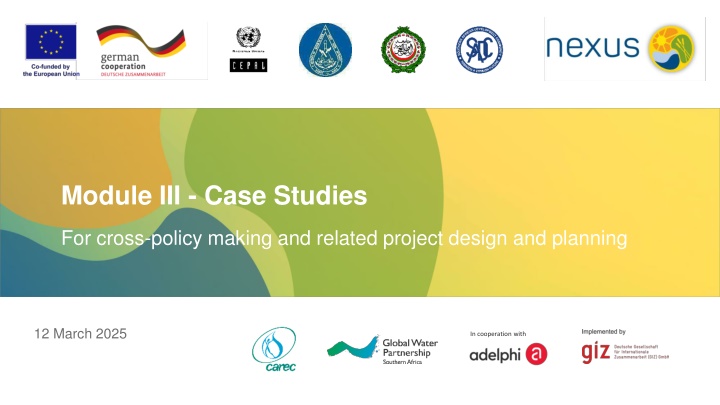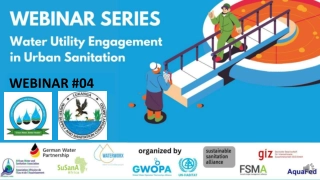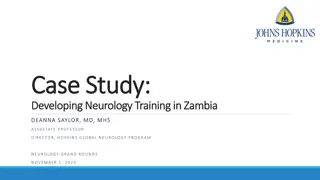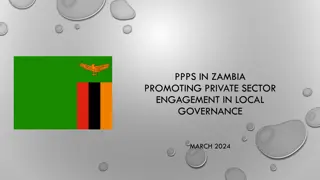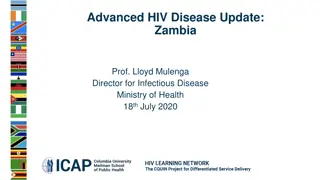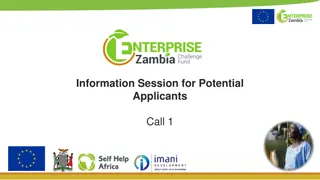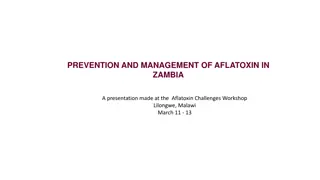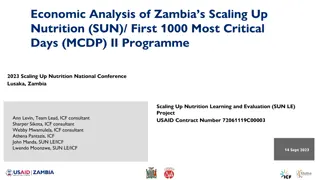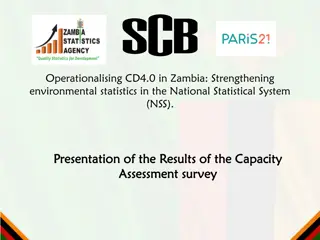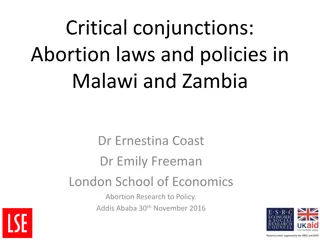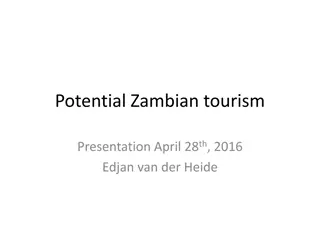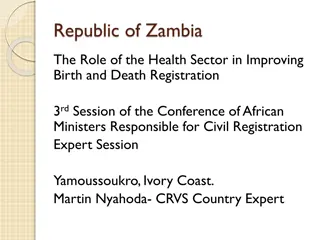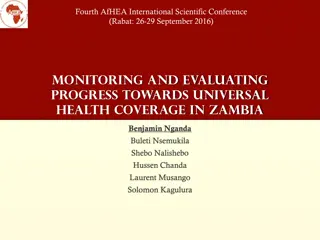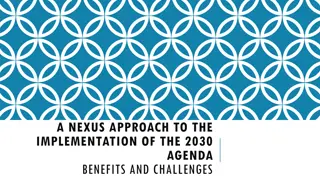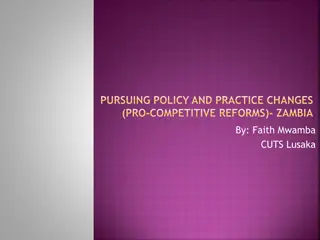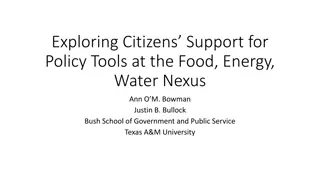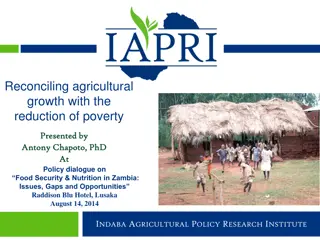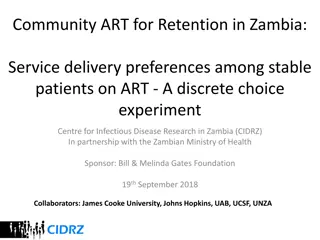Case Studies for WEF-Nexus Coordination in Zambia
This case study focuses on the challenges faced in coordinating water, agriculture, and energy sectors in the Lower Kafue basin of Zambia. The region's abundant water resources, coupled with issues of drought and increasing demand, highlight the need for sustainable management. The integration of hydropower generation, irrigation systems, and water supply for both livelihoods and environmental preservation is crucial for the basin's socio-economic development and environmental sustainability.
Download Presentation

Please find below an Image/Link to download the presentation.
The content on the website is provided AS IS for your information and personal use only. It may not be sold, licensed, or shared on other websites without obtaining consent from the author.If you encounter any issues during the download, it is possible that the publisher has removed the file from their server.
You are allowed to download the files provided on this website for personal or commercial use, subject to the condition that they are used lawfully. All files are the property of their respective owners.
The content on the website is provided AS IS for your information and personal use only. It may not be sold, licensed, or shared on other websites without obtaining consent from the author.
E N D
Presentation Transcript
Module III - Case Studies For cross-policy making and related project design and planning 12 March 2025 In cooperation with
Overview of case studies Region Scale (local, regional, national, transboundary) Sectors (water, agriculture, energy) Solutions (technical, nature-based, governance, focus on challenges) Policy framework for WEF coordination, Germany Europe Hydropower in the Reventaz n River, Costa Rica LAC Mobile solar powered irrigation systems (SPIS), Bolivia LAC MENA Region The Sahara Forest Project, Jordan The Lagdo Dam in the valley of the Benue, Cameroon Niger Basin WEF-Nexus coordination in the lower Kafue basin, Zambia SADC 2
WEF-Nexus coordination in the lower Kafue basin, Zambia SADC
WEF-Nexus coordination in the lower Kafue basin, Zambia Sectors and scale Parameters Description Water Zambia has abundant water resources Local and temporal water stress due to prolonged droughts and increasing demand Land/ agriculture The Zambian Government aims to increase small and large-scale irrigated agriculture throughout the country to: improve food security create income & employment increase resilience towards climate change Sectors Energy Hydropower generates the majority of Zambia s electricity through dams distributed across the Zambezi and the Kafue National/ local The Lower Kafue is a sub-basin of the Zambezi River Basin which is important for: Livelihoods (agriculture, fishing) Hydropower generation Water supply for Lusaka Environmental integrity (maintaining important wetlands) Scale 4
WEF-Nexus coordination in the lower Kafue catchment, Zambia Source: Phiri & Scheumann 2018 5
WEF-Nexus coordination in the lower Kafue catchment, Zambia Nexus challenges 1. During times of drought, the energy plants, agricultural producers and the environment compete over limited amounts of water resources Sinking water levels in dams decreasing hydropower production Water Water supply to consumers disrupted Energy 6
WEF-Nexus coordination in the lower Kafue catchment, Zambia Increased water abstraction for irrigation limiting water and land resources for other small-scale farmers Nexus challenges 2. Planned large-scale, commercialised irrigation would increases water stress and compete with water for hydropower generation and water supply to growing urban population (partciularly during times of drought) Water Water supply to consumers disrupted Less water for urban population Land/ Agriculture Energy Less water for hydropower generation 7
WEF-Nexus coordination in the lower Kafue catchment, Zambia Key stakeholders 8
WEF-Nexus coordination in the lower Kafue catchment, Zambia Coordination approaches at the national level 5-year National Development Plans Key cross-sectoral planning document outlining strategic development goals (e.g. expansion of agr. irrigation for development) All other sectoral policies have to be aligned with objectives and activities of the NDP Inclusion of national sectoral views by using Sector Advisory Groups 9
WEF-Nexus coordination in the lower Kafue catchment, Zambia Coordination approaches at the national level Inter-sectoral planning group To coordinate activities around the national Farm Block Development Programme (commercialization of over 1 Mio ha of land into largely irrigated agricultural land) Requires investments in infrastructure such as roads and electricity to create an attractive infrastructure package for investors and to manage cross-sectoral conflicts Horizontal coordination to overcome infrastructure deficits for agricultural investments and to address potential conflicts 10
WEF-Nexus coordination in the lower Kafue catchment, Zambia Coordination approaches at the local level Coordination between Zambia Electricity Supply Company (ZESCO) and Zambia Sugar Ltd.: Interlinkages and flow dependencies between upstream (hydropower, irrigation) and downstream users (hydropower) Data exchange on water withdrawals for irrigation (Zambia Sugar Ltd.) and water release by ZESCO on daily basis 11
WEF-Nexus coordination in the lower Kafue catchment, Zambia Implementation: Success factors and challenges Success factors: Prospect of attracting foreign investments can incentivize cross-sectoral coordination Challenges: Lack of technical and administrative capacities at all levels, including provincial and district level make vertical coordination difficult Limited data and information (either incomplete, unreliable or withheld) Absence of mechanisms that protect non-commercial water user rights 12
Thank you for your time! 12 March 2025 In cooperation with
